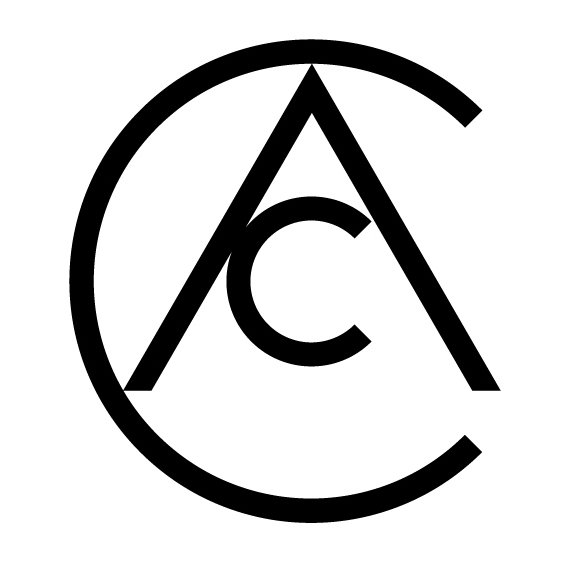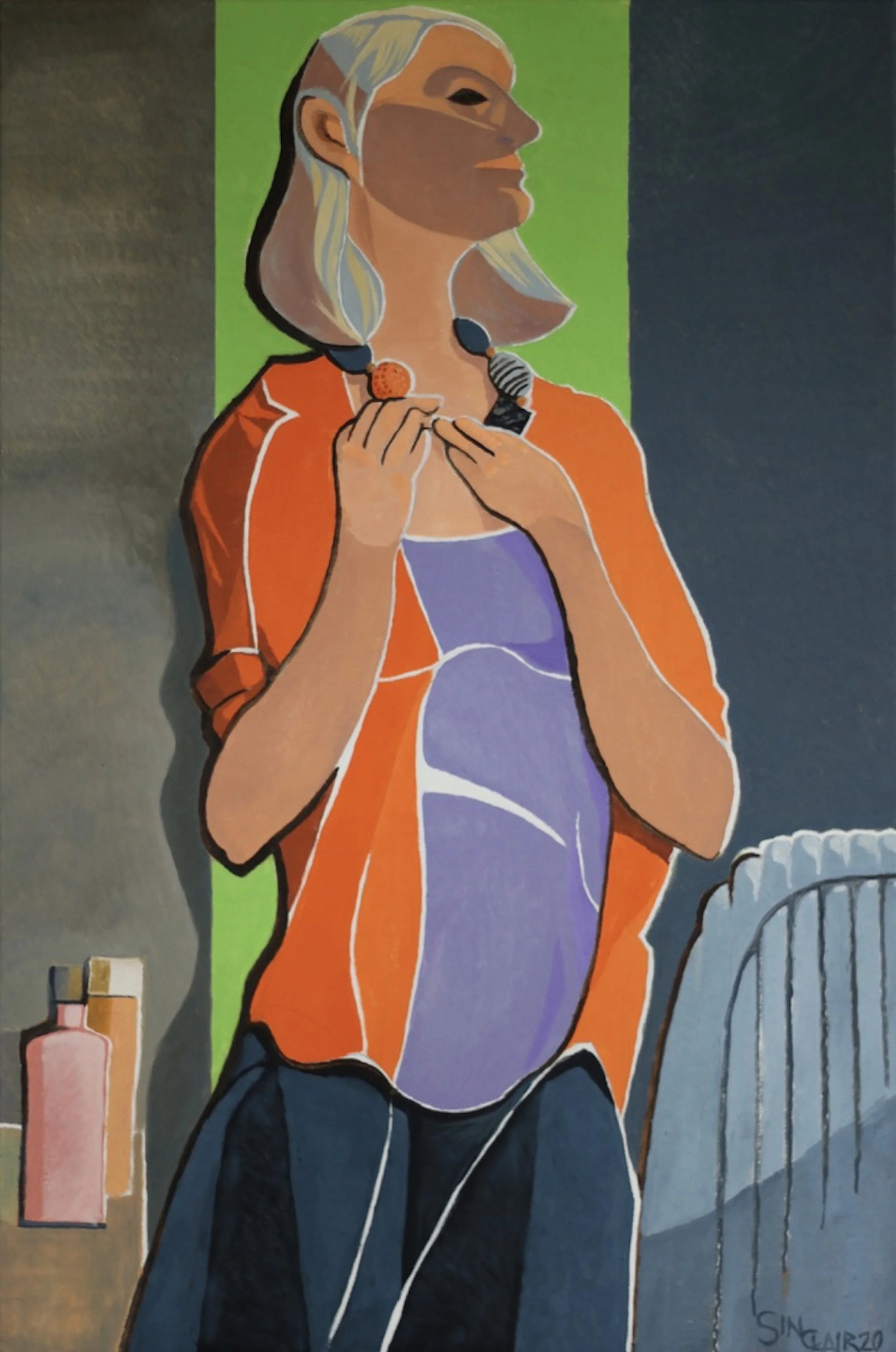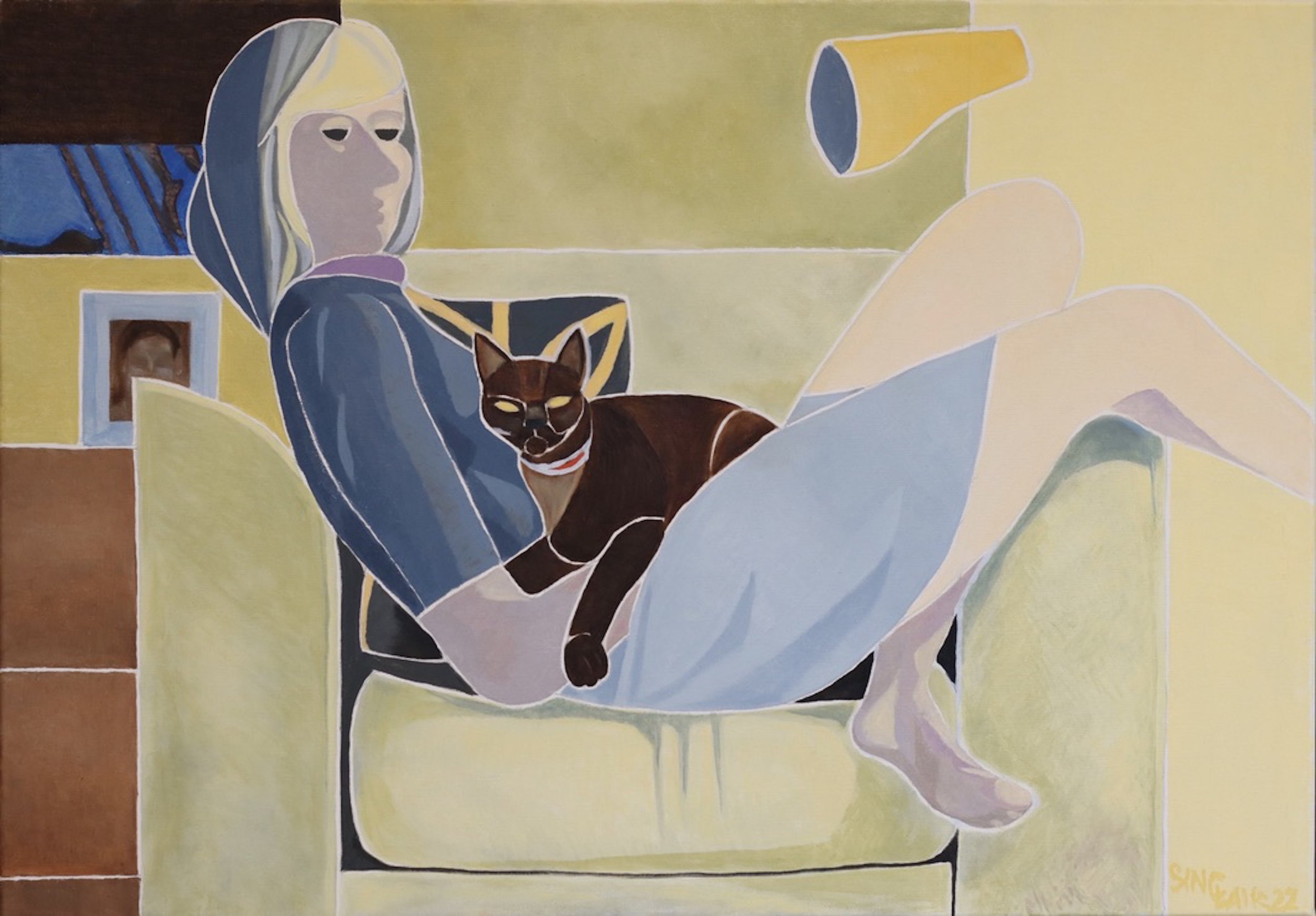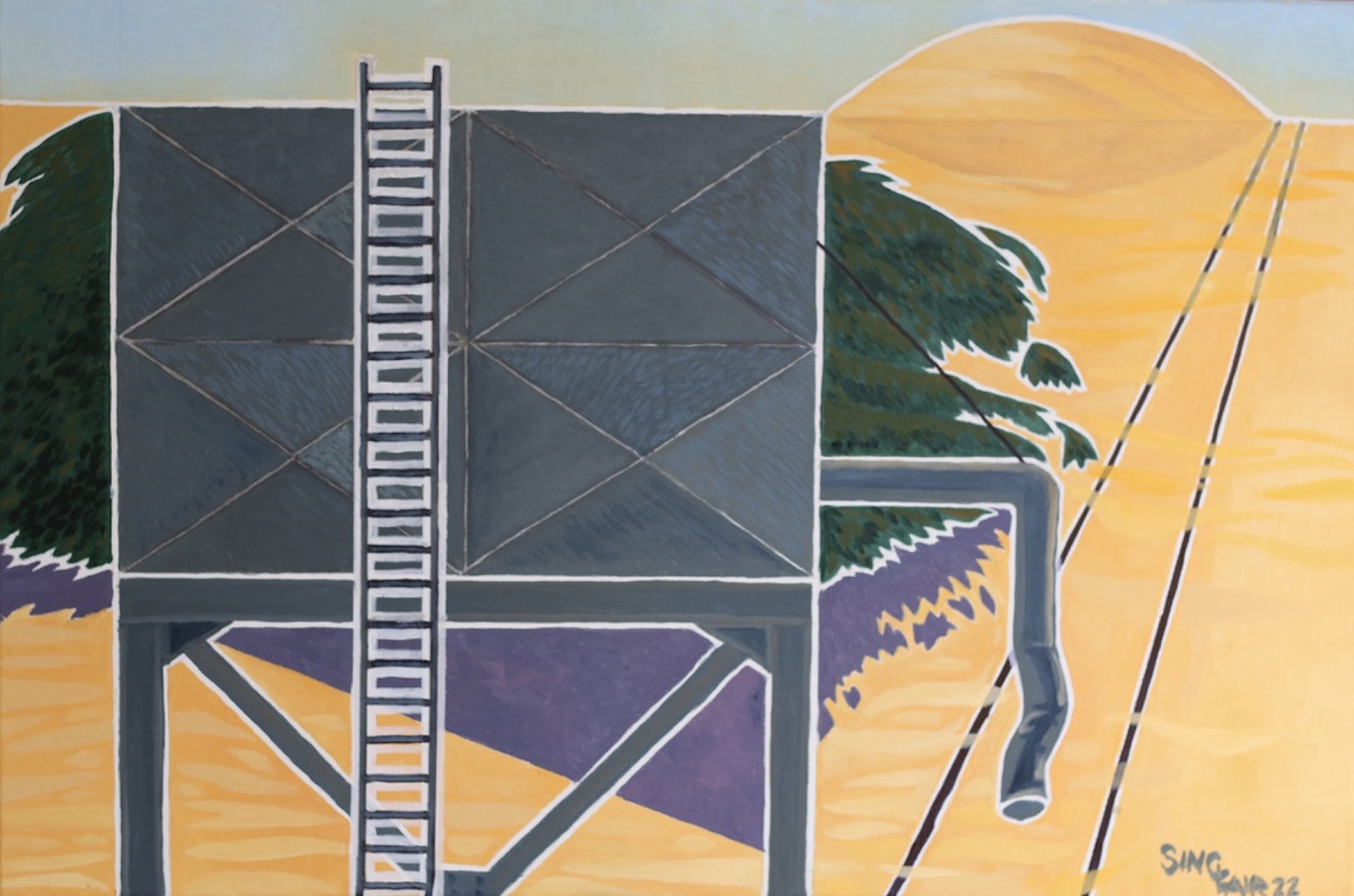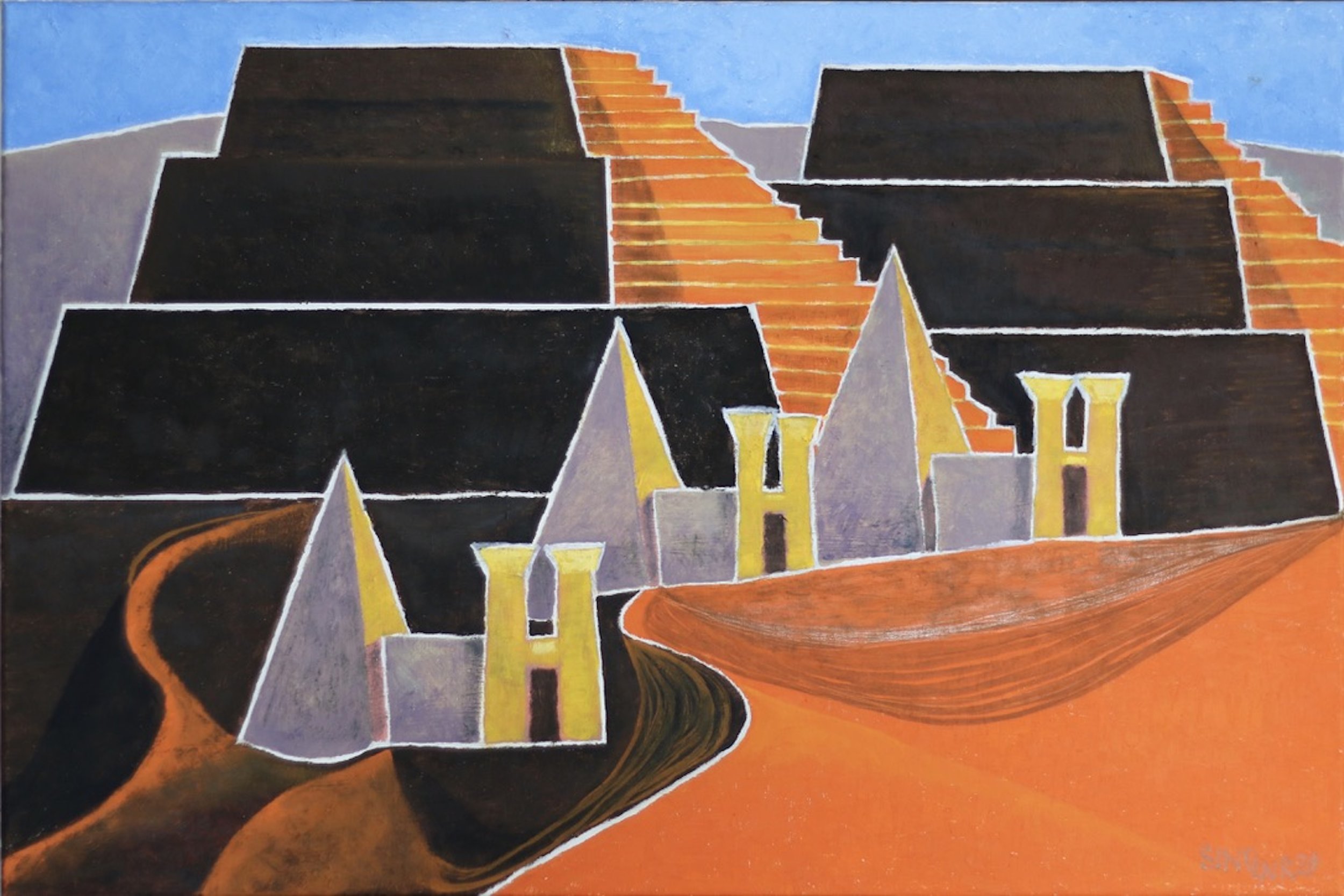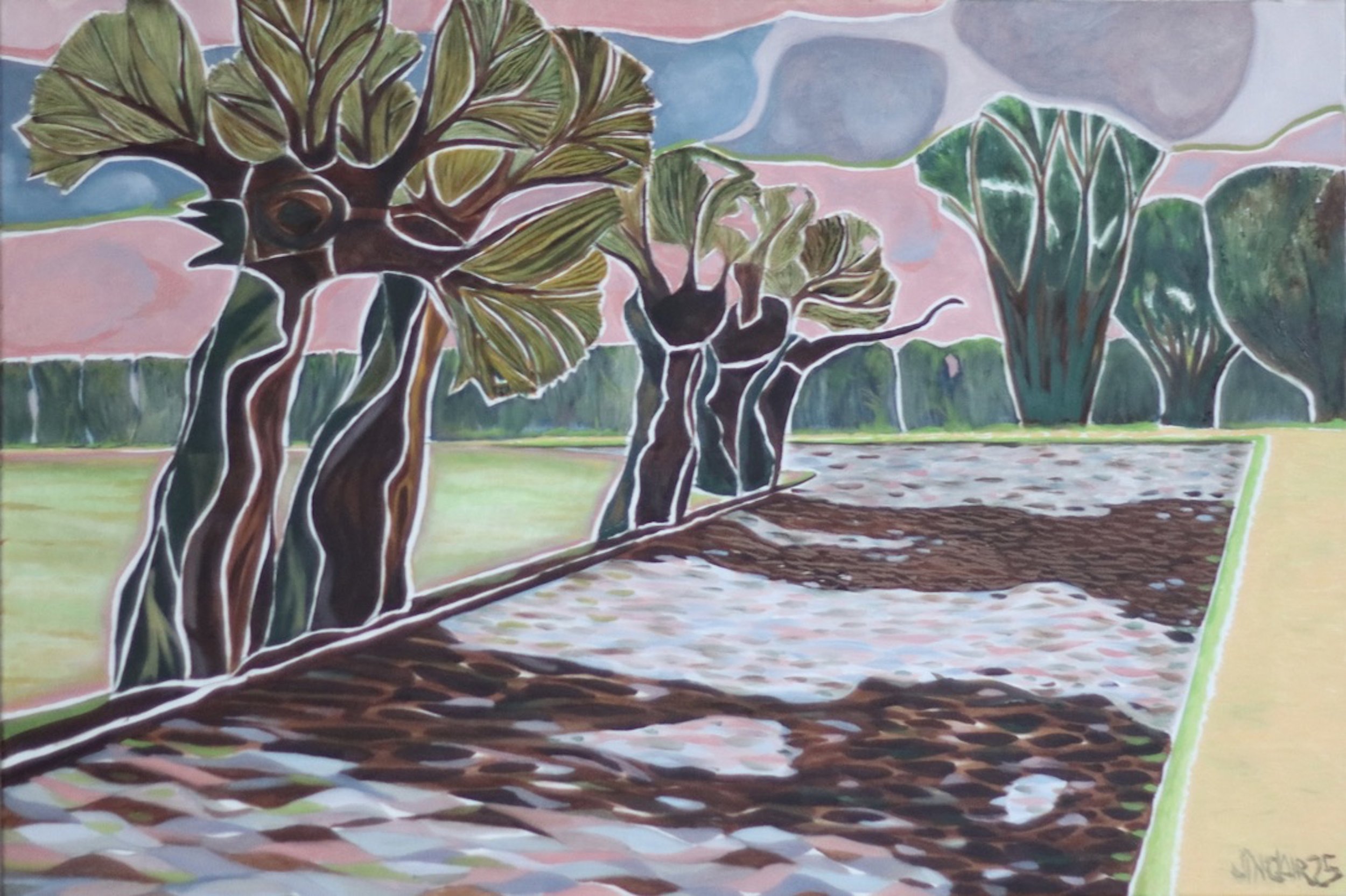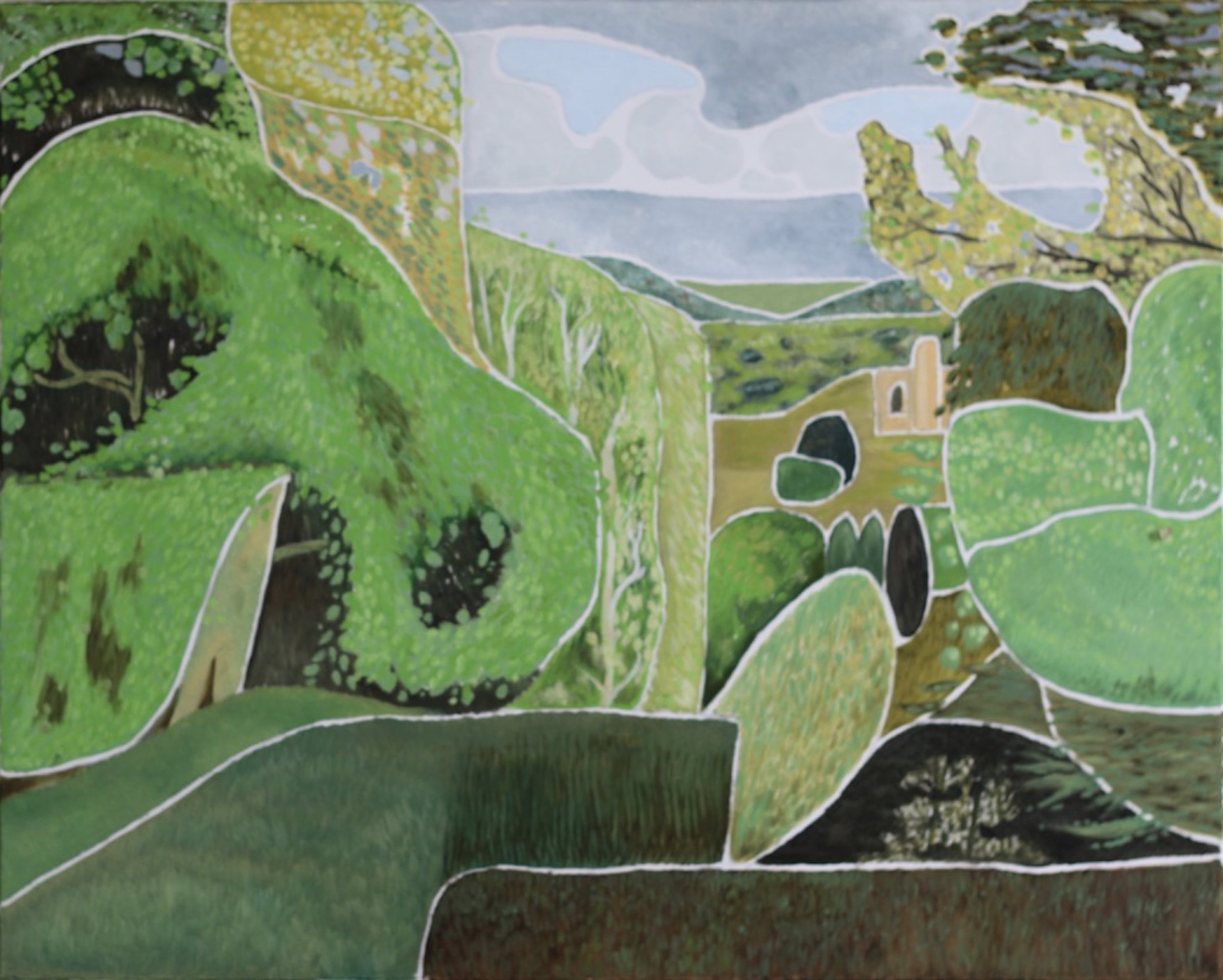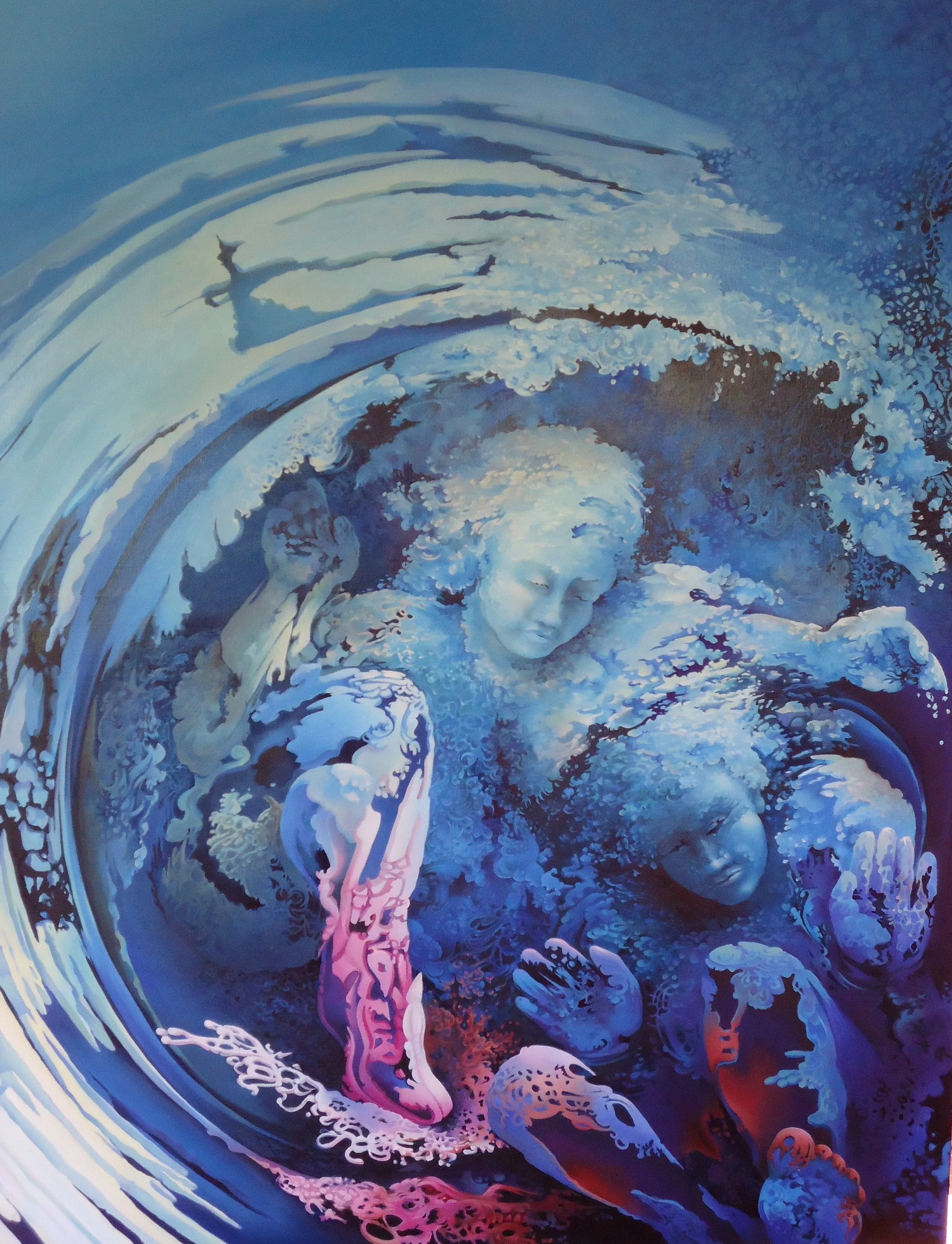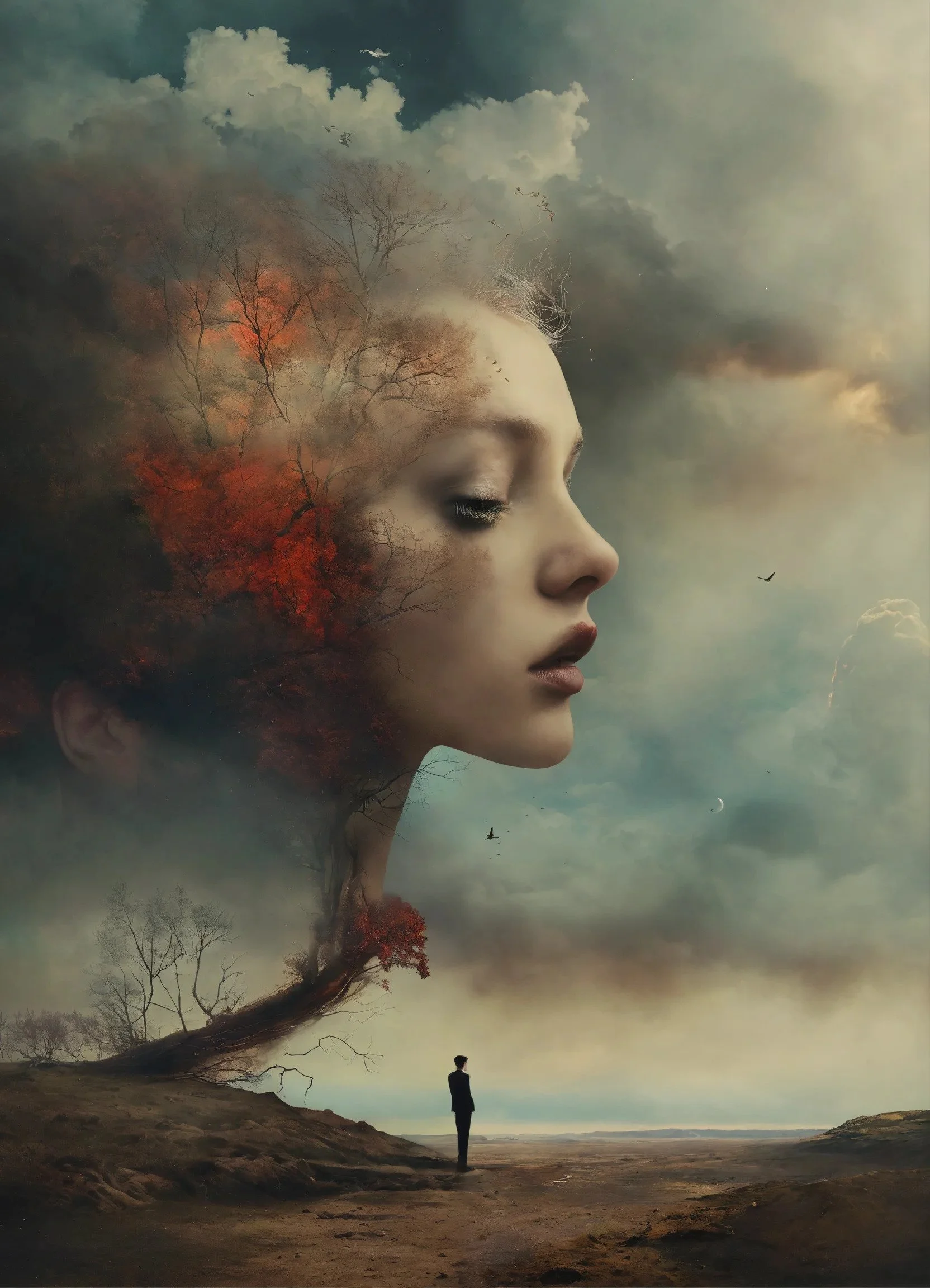Interview with Sinclair Webster
Sinclair Webster is of Scottish and Flemish parentage and his father’s s career meant he grew up firstly in an Afro Arabic environment in the Sudan and latterly in post-colonial Kenya.
After a 40 year career innovating in the design of healthcare facilities internationally, he returned to painting and drawing full time in 2016.
He has had one-man exhibitions in Nairobi, in Ypres and Roeselare in Belgium, in Cambridge and in Edinburgh. Currently he participates in group shows whether locally in Surrey or in London. Most of his work features people, animals and landscapes with which he is familiar, whether in Africa, Sussex or Yorkshire, and some out of his religious beliefs and interest in myths.
Many pictures arise out of an encounter demanding to be set down. Some are retained for years while there is a dialogue between memory and the way the image wants to express itself on paper or canvas. Others recur and find different forms depending on the medium used.
https://www.sinclairwebsterart.co.uk
Your work is deeply rooted in memory and the act of reconstructing scenes and emotions. Can you elaborate on your process of translating memories into visual art, and how you navigate the tension between the remembered and the imagined?
William Blake wrote “No man of sense ever supposes that copying from Nature is the Art of Painting: if Art is no better than any other Manual Labour: anybody may do it & the fool often will do it best as it is work of no Mind.” Art is about seeking. I think every artist is trying to express what it is that moved him or her . Inspiration means what gave them breath, i.e., gave them life - “ the end of all our exploring will be to arrive where we started and know the place for the first time” wrote T S Eliot. He used words, painters use colour, line and shapes to seize an original insightful visual stimulus.
Making a picture for me is not about trying to construct a pleasing image but about trying to communicate the emotional I felt when I encountered what I have sometimes called charismatic moments, when I see people or animals or a landscape that feels charged. Memory is a necessary way to recover that, a filter to remove anything that is superfluous to expressing that emotion.
The tension between the remembered and the imagined is in finding the right line to enclose a shape. Blake wrote “the great and golden rule of art, as well as of life, is this: That the more distinct, sharp and wirey the bounding line, the more perfect the work of art.”
The bounding line encloses a shape. For me shapes are very important. The continuity principle of Gestalt states that we group elements that seem to follow a continuous path in a particular direction. The human eye follows the paths, lines, and curves of a design and prefers to see a continuous flow of visual elements rather than separated objects.
How has your background in architecture, with its emphasis on structure, spatial awareness, and collaboration, shaped your approach to painting, which is a more solitary and immediate discipline?
I was an accidental architect, having gone up to Cambridge to read Modern Languages. In my college I painted alongside two architecture students who encouraged me to transfer as I was bored by the Languages course, as I had read all the set books during my Gap Year. In those days Cambridge thought they could teach you anything, whatever your academic background. I married one of the three girls in our year at the department and economic reality meant I became an architect. I was interested in the complex activities that took place in healthcare buildings and the dynamics of the continuous changes that seemed to drive their built environments. I had intuited an analogy between the life of cities and these buildings during my post graduate course which I spend developing and testing a computer based space and activity model based on the work on urban systems by the Rand Corporation. My external examiner offered me a job at a higher rate than was generally paid to newly fledged architects and I took it.
Architects have to figure out how to deliver clients’ dreams, first get inside their heads and then surprise and hopefully, delight them by imagining and delivering a building that exceeded their expectations. That is the mission.
You have to be a team player on major projects in architectural practice, you cannot do it all. I used to tell my team we were dream merchants. A range of talents are needed. On the team you don’t necessarily own the vision, but you have to embrace and work up that part where you can best contribute. It turned out I had three skills: visioning, I could think patterns and shapes and manipulate them due to my secret talent of being on the spectrum, and two people skills, man management – conducting the orchestra of all the other talents, as it were- and prioritising use experience over rather than shape making became the driver of my approach to design/
You have to be bloody minded to push the vision through. The letters R I B A identify all professionally qualified and registered architects in the UK. We joked that they stood for “Remember I am the Bloody Architect,” which you had to use with the other professionals involved, project managers, so called cost consults and the various engineering disciplines, in order to deliver that vision. 5% inspiration, 95% perspiration. Dropping all that was liberating.
You’ve mentioned the influence of German and Flemish expressionists on your work. What aspects of their style or philosophy resonate with you most, and how have you adapted those elements to suit your personal vision?
Let me name those I admire. Kathe Kollwitz, Constant Permeke, Albert Servaes, August Macke, Emil Nolde, Gabrielle Munter, Paula Modersohn Becker. The Flemish painters’ work was consciously referred to in the Flemish half of my family, which had several painters in it. The Germans I found out about from books in the Goethe Institute in Khartoum when my parents lived there.
Briefly: I share Nolde’s affinity with flat watery landscapes and big changeable skies and his expressive use of colour. With Paula Modersohn Becker and Gabrielle Munter their close ups of people. See “Sitting sideways with Alfie, (1)“for example, or “The Clasp,” (2).Kathe Kollwitz’s focus on motherhood has informed the many paintings I have done of mothers and babies, e.g. ,“Mary.” (3)
Permeke ‘s work focused on the Flemish peasantry and fishermen. I think he felt there was an atavistic life force in them. I can remember as a child seeing women stooping in the fields to harvest beans and horseback fishermen trawling at low tide for grey shrimps, so I thought I could understand what he felt: that no one who did not get their feet in the mud could feel the life pulse that drives art.
From them I learned to use emphatic lines; my lines break up areas of colour as I try to create an equipotential pictorial field.
They were all acutely aware of resonances with what was happening in France at the time with the Fauves and because of their interest I started to look at Derain, Vlaminck (the name is a giveaway) and then there is Matisse, a Flemish name shared with Quintin Metsys but given a French spelling who was liberated by the light and colour of the south, which I found growing up in Africa.
Your paintings often draw from landscapes and experiences in Africa, Sussex, and Yorkshire. How do these diverse geographies and cultures inform your artistic narrative, and do you find yourself returning to certain themes more often than others?
I love wide open spaces, which I first found in the Sudan. I loved the monotony that made incidents dramatic. See my Painting “Water Point ” (4) A railway line reaches into the distant purple hills or “Meroe”(5) with the pyramids catching the setting sun which has turned the sands red. These both feature human artifacts but there are no people around.
I have always lived in two worlds. I have been aware of cultural differences but I have never been an indigenous member of ay group where ever I have lived. My family comes from two very different groups: Catholic, Flemish and semi-rural and High Tory High Church Anglicans. I grew up at the end of the British imperial adventure among the last generation of those who were sent “Home” at some point to be educated. There was a clear break between “here” and “there. “ Here was by the Nile and my first school was a multi racial mission school run by the Comboni Brothers. I learned English and Arabic from an Italian nun! My world centred on a big stripe of sparkling water contained by the land . There was a green strip of irrigated crop land then desert, it seemed all the way to the Atlantic . I tried to capture its scale and sparkle in “A son of the Nile,”(6) an eight year old squatting by the water side, with a marabou stork and crocodile nearby. There was no croc at the time but they nested on the island in the middle of the river.
I was at school in West Sussex so I did not encounter large scale landscapes until I started hill walking in Scotland and later still when our son moved to North Yorkshire.
Sussex and Surrey are small scale landscapes of small fields and enclosing woods which encourage concealment and fieldcraft for the intimate observation of animals. See “Brock in the brush (A285) (7),” a badger in the fallen leaves of a planted strip beside a field. Such strips are common in Sussex giving the impression that the whole area is wooded. Surrey is the most wooded county in England where I found a roe buck “In deep cover.”’(8).
From childhood I have pursued animals with sharper senses of sight, hearing and smell than we possess. This was liberating because to enter their sensory world you had to still conscious thought and go into total alert in which a slight anomaly in the overall pattern was the clue to the presence of the sought animals. This was often the trigger to the charismatic reveal that my pictures try to reconstruct.
Some of your work stems from your religious beliefs and interest in myths. How do you approach the integration of spirituality and mythology into your art without overshadowing the visual storytelling?
Once upon a time art was expected to convey the narratives from Romano-Greek and Christian ethics arising from their respective religious beliefs. Printed texts and reading have disseminated the narratives widely so that I do not need to relay them but seek to express a personal insight just as my depiction of people, animals and places express personal experiences.
My approach has been visceral, focussing on the central action rather than rehashing well known narratives.
In “Christ falls for the first time” (9) He looks straight at you and I as though we were there witnessing His humiliation and torture. I have shown Him in a short robe, not the long robe of traditional iconography, which would have placed Him among the ruling classes. He is one of the common people and his back is stained by the blood that has seeped from His wounds from His whipping.
In “Orpheus and Euridice” (10) he faces away, looking for Euridice, we see up close a man who cannot obey the rules set for him, even for the short time it would have taken for Euridice to follow him back into the everyday world. The image focuses on the intricacies of lyre on his back, the playing of which had led to the envy of Apollo.
You describe some artworks as engaging in a “dialogue” between memory and the image’s expression. Can you discuss how this dialogue evolves, particularly in works that you retain for years before completing?
Images that get established in my mind are not sharp edged as I do not have photo perfect recall; nevertheless, the image has a fullness which I can explore if I start to question what is there. There were sixty years between me squatting on the river edge looking at mica flakes in the mud and my painting “A son of the Nile.” In that painting I was focussed on recalling the squatting posture I had learned from watching Sudanese men.
Edges develop as I try to find the bounding line and that process is mind to hand to paper, semi unconscious, drawn from the wrist. It is very intimate and allows you to explore the whole experience in a small environment, the piece of paper in front of you. Often I make theses drawings with my eyes half shut. The image coalesces, if you like.
I do not square my sketch and the dimensions of the canvas do not correspond with the A sizes of my notebooks or marginal sketches so it is a redefinition of the idea. New boundaries are found in response to the different dimensions of the canvas. One is physically further from where the image is and the mind is now making patterns and the drawing is from the elbow, so rhythms are stronger. Troubled by risk of loss of immediacy, recently I have omitted the use of a sketch and have been drawing direct to canvas until I find the line. Then I seal it with a wash of turps over the pencil after which erase the unused lines – to greater or lesser extent as sometimes I use them to introduce the unpainted lines which break up the colour fields.
Your art strikes a balance between abstraction and the depiction of familiar subjects. How do you determine the right level of abstraction to convey the emotional essence of a scene without losing its connection to reality?
This is not a conscious preplanned process. Mostly it comes from the drawing. I try to eliminate the graphically superfluous but then break back by introducing detail. I work up large areas of unform or gradated colour with deliberately rhythmic brush work , sometimes varying the direction of the strokes line by line as I work across or I introduce a passage of broken treatments of leaves or tree trunks in particular to offset area of colour. I know that when varnished these will catch the light in different ways and enliven the whole. See my very recent “A bend in the river,” (11) I was concerned that I could have become lost in the scale of reflections in the water and introducing perspective to the overall image. So the water meadow in arranged vertically behind the willow trees and the river bank on the right hand side is extended upwards to join a horizontal line where the river turns.
After a long career in architecture, what was the most challenging aspect of returning to painting full-time, and how did that shift influence your artistic growth?
It took me a while to recognise what I believe to be my vocation. During the time I was an architect my occasional paintings were carried out in a sub Pop manner, over riding the more expressionist technique that I had developed before entering the world of architect approved imagery. I think I was a victim of the prevalent slick self-referential “ironic” culture. I had to step away from that. I have had to relearn skills. “The first 100 pictures are practice”. Who said that? My record of my paintings since 2016 has brough me to number 216, so maybe I am getting into the swing of it.
At first we lived within 20 minutes’ walk of the theatres and cinemas of the West End. Whilst I continued to work in the heart of the metropolis, in Camden and later Soho, we had moved to a “rus in urbe” suburbia consisting mostly of Edwardian houses surrounded by trees. I used to enjoy contrast between my home and work environments. Now where I live, five minutes from my door I can walk into the centre of a 1000 year old town or into meadows with rabbits, geese and deer browsing. Look north and east I can see the Wembley Arch and Canary Wharf. Look south can see a valley, the Weald with pressure ridge hills then more downs at the coast.
I used to be the hub (bub) of a team arranged around me, often having to review developments of what they were working on as well as providing the concept for the whole; interactions were very verbal. Now in a studio by myself, I do not have to talk to anyone. Outside my window I have a great view, “Chapel View”(12), which I turn my back on, though I can look at it when on the phone or at my iMac.
Your work has been exhibited in diverse locations like Nairobi, Belgium, and the UK. How do the cultural and artistic contexts of these places influence the reception of your art, and how do you tailor your work to engage with different audiences?
I have never paid much attention to how my work has been received, I paint because that is my vocation. Kenya was very much like Surrey, but with sunshine. To please the expats, I would have painted small watercolours of elephants at waterholes or Kilimanjaro in the morning mist. My sales there were to Americans going on Safari. I am extremely proud that one of America’s and the world’s best loved cartoonists bought a large work off me there.
In Surrey I have found my public among those who are setting up homes, not afraid to remodel and impose new ways of being.
In Belgium I sold to senior school teachers, academics and business men with an eye for art, some of whom were interested in how someone like me came to be showing there and speaking their language like a native. I had two active painters in my mother’s generation of the family and through the galleries I showed in I made friends with other painters, entered a bohemian life style for a while and then in Cambridge and with the Footlights in Edinburgh I sold to academics and an educated public.
Having navigated a unique career path from early artistic recognition to architecture and back to full-time painting, what advice would you give to artists seeking to balance practicality with their creative passions?
To quote Chuck Berry, ”You never can tell.” Serendipity meant that when I went to university to read Modern Languages there were two men in my year who were reading architecture, not law or history or Natural Sciences and over endless late night cups of coffee I discovered an affinity for what they were doing.
Serendipity that when looking for an office in easy walking distance – longer in bed, no commuting - I was accepted by an office where the principal collected pictures by his contemporaries , e.g.. William Scott and ceramics by Hans Koper and Lucie Rie. Sometimes during my lunch hour I would go round a couple of Bond Street galleries to see new work.
Serendipity that I worked with Robert Venturi on the Sainsbury Wing of the National Gallery and client meeting took place at 8.00 a.m. which meant I could have the whole collection to myself for half an hour before hand.
I hesitate to offer advice; everyone has to follow their own path and make use of the opportunities that present themselves. Stuff happens. Go with the flow? As long as the flow is going the way you want it to. I was never secure, able to see more than six months ahead. As my best buddy in the practice said to me once, “We can make money or we can have fun.” We chose fun.
1.Sitting sideways with Alfie 70 X 10cm
2. The clasp 90 X 60 cm
3.Water Point 60 X 90 cm
4.Mary 60 X 80 cm
5. Meroe 60 X 90 cm
6.A son of the Nile 60 X 90 cm
7.Brock in the brush 76 X 102 cm
8.in deep cover 60 X 80 cm
9 .Christ fall for the first time 80 X 60 cm
10. Orpheus and Euridice 90 X 60 cm
11. A bend in the river 60 X 90 cm
12. Chapel View 60 X 80 cm
